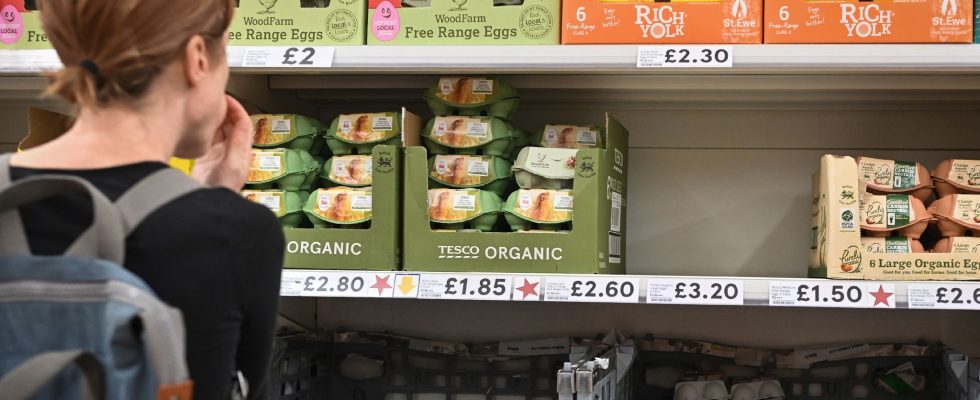Inflation is far from gone, but it’s a good start. On Wednesday 20 September, the UK Office for National Statistics (ONS) published its latest figures on the average increase in consumer prices in the country, with a surprise: while economists predicted an increase for the month of August 2023, the annual inflation rate was contained at 6.7%. Or 0.1% less than in July.
If this rate remains high, especially across the European continent, this is the sixth consecutive fall in inflation in the United Kingdom. A trend which is also observed in the rest of Europe, although inflation and the measures taken to reduce it still weigh on economic activity.
A drop in prices for restaurants, hotels and plane tickets
In detail, this reduction in the rise in consumer prices in the United Kingdom is especially visible for core inflation, that is to say that which excludes the evolution of the prices of energy, food, alcohol and tobacco. This so-called “underlying” price increase has in fact decreased more than expected, going from 6.9% in July to 6.2% in August.
Behind this unexpected phenomenon, the British Office of National Statistics identifies several elements. First, a drop in prices in the “restaurants and hotels” sector, the amounts of which can vary quickly, for example depending on the number of rooms available. The cost of plane tickets also decreased between July and August.
For the rest, the fall in British inflation is linked more to a slowdown in the rise than to cheaper prices. This is particularly the case for the prices of “food and non-alcoholic beverages”, of which “the most significant downward contributions came from the categories of milk, cheese and eggs, vegetables and fish”, details the statistical institution.
Likewise, prices in the leisure and cultural sectors increased more slowly than the previous month, reports the ONS, in particular concerning cultural services or “products related to pets”. Finally, the rise in prices of “furniture, [des] furnishings and [des] household appliances” also slowed down between July and August.
Good news tempered by fuel prices
On the other hand, the fall in overall inflation is less severe once we include the change in energy prices. As stated the british daily The Guardian, this decrease in August was limited “by the rise in gasoline and diesel prices, in a context of a sharp rise in world oil prices.” Likewise, the increase in taxes on alcoholic beverages also weighed in the balance, indicates the British agency Reuters.
British inflation thus remains one of the highest on the continent in August, exceeded only by Iceland and Austria in Western Europe, indicates the agency. Reuters also recalls that the Organization for Economic Co-operation and Development (OECD) estimated on Tuesday that Great Britain should experience the highest inflation among developed economies in 2023.
Despite everything, this surprise drop remains good news for the Bank of England. Indeed, this announcement seems to reduce a little pressure on the economic institution, while the institution must announce this Thursday a possible increase in its interest rates for the fifteenth consecutive time. While this umpteenth increase since December 2021 was seen as “its last attempt” to slow galloping inflation in the United Kingdom, the new figures announced on Wednesday could call this announcement into question, according to Reuters.
A trend observable in the rest of Europe
Although the fall in inflation is more significant across the Channel, this trend nevertheless remains visible on the rest of the European continent. In August, the annual inflation rate of the 20 eurozone countries also fell to 5.2%, according to figures published Tuesday by Eurostat. This same rate in France is estimated at 5.7%.
Again, this represents a drop of 0.1% in the eurozone compared to the previous estimate published at the end of August. Inflation in countries sharing the single currency has been halved since a record 10.6% reached in October 2022, amid rising gas and oil prices after the start of the war in Ukraine.
This rate of 5.2%, however, remains well above the 2% objective set by the European Central Bank (ECB). This is why the ECB continues to apply the same strategy as the Bank of England, announcing again last Thursday an increase in its reference interest rate to 4%. This is its highest level since 1999.
A strategy which nevertheless continues to slow down European economies. On Tuesday, the OECD’s chief economist Clare Lombardelli judged during a press conference that this increase in interest rates is “necessary to reduce inflation, but painful”, by limiting the ability of households and businesses to get credit.
